OddCameras.com
Durst Automatica
The Durst
Automatica is a 35mm viewfinder camera, made by Durst SA, Bolzano,
South Tyrol, Italy, the maker of the famous enlargers. The camera was
produced from 1956 until 1963. This is the first camera to have an aperture priority automatic exposure. The Durst brothers filed a patent for this automatic exposure in 1952, it was granted it 1954. Why they filed it in Germany I don't know, maybe because South Tyrol is speaking German.
The camera has a coated Schneider Durst Radionar 45 mm f/2.8 lens in a special Prontor SVS shutter. In automatic
setting, the shutter speed is controlled by the selenium
meter via a partly electr(on)ic, partly pneumatic device. Arming the
shutter loads an air chamber with a piston. At the exit of the chamber
sits a valve, which is electrically controlled by the meter. The
shutter is set to 1/300 and then pneumatically delayed until the piston
of the air chamber has come up again to close the shutter. The aperture
is determined by the ISO setting, so there are fixed equivalents to
each ISO value: 400=22, 200=16, 100=11, 50=8, 25=5.6, 12=4 and 6=2.8.
Modern film will have a tolerance of one to two apertures.
The same mechanism was used by Agfa in their Automatic 66, but they
made an important improvement: the aperture is controlled via the
aperture ring and they added a separate ISO setting at the top of the
housing, a blind integrated into the selenium cell shades it for higher ISOs.
In
non-automatic mode there are speeds from 1 to 1/300s plus B. Size is 140x80x65mm and it's on the heavy side, 692g. The camera
lacks a rangefinder and parallax correction. The Durst camera
production ended with this model in 1963.
Some photos:
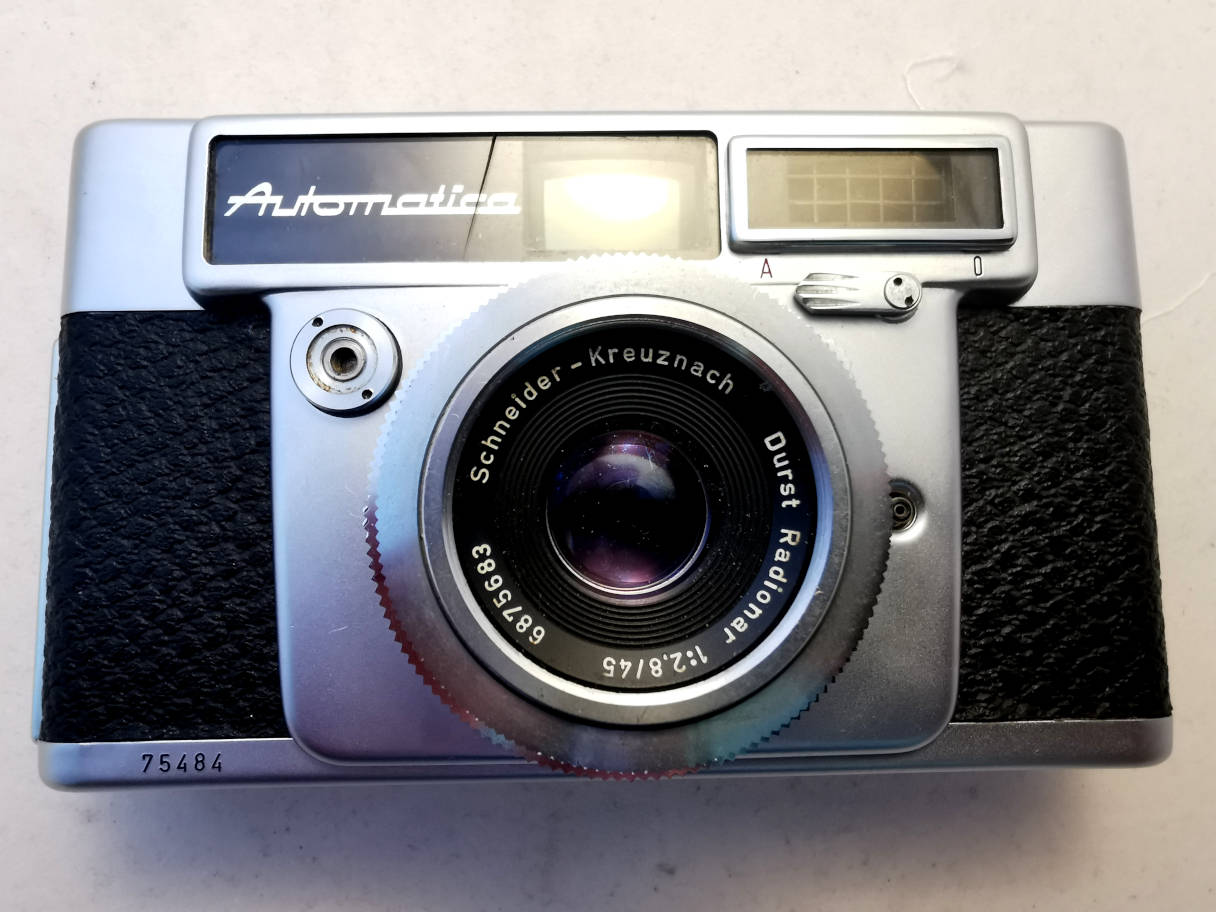
Camera
front. The big button under the "automatica" logo is the shutter
release. It has to be pushed inwards and is very smooth. Lever under
the selenium cell set to automatic. According to the Schneider lens serial number, the camera must be from late 1960 (or later).

Camera top. Rewind (pops up when the release is pressed). Metered speed reading, accessory shoe and film wind lever.
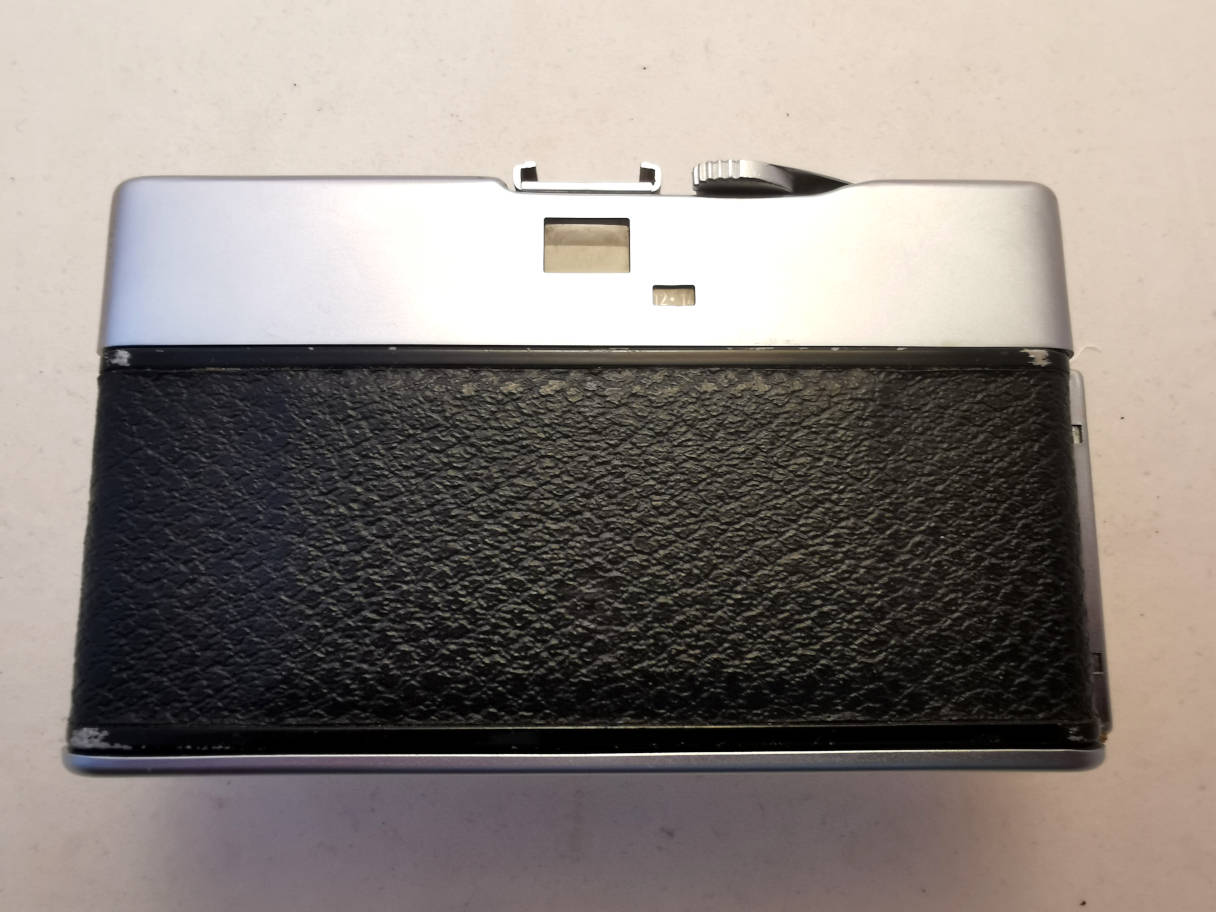
Camera
back. Eyepiece and tiny counter.
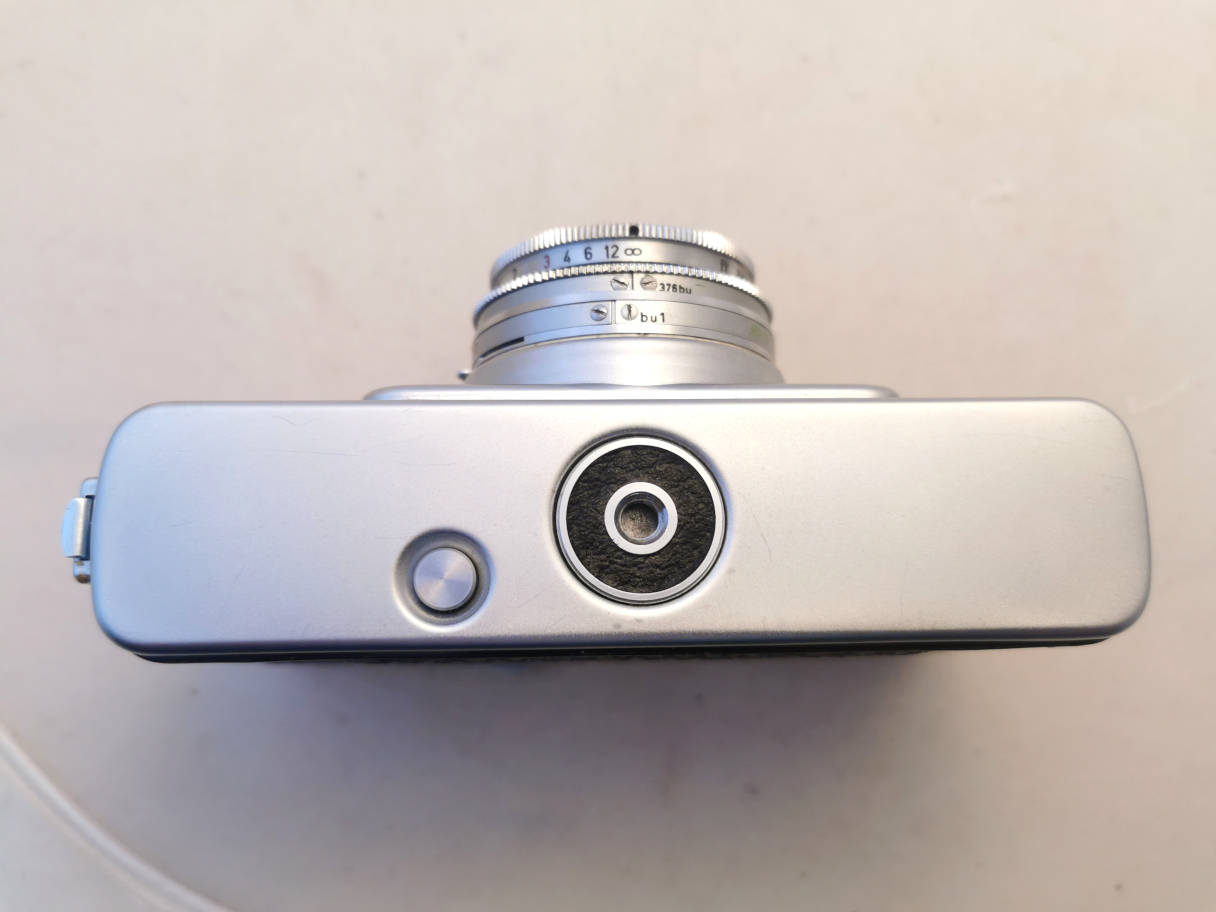
Camera
bottom. Tripod socket and rewind release.

Seen
from above. Working meter.
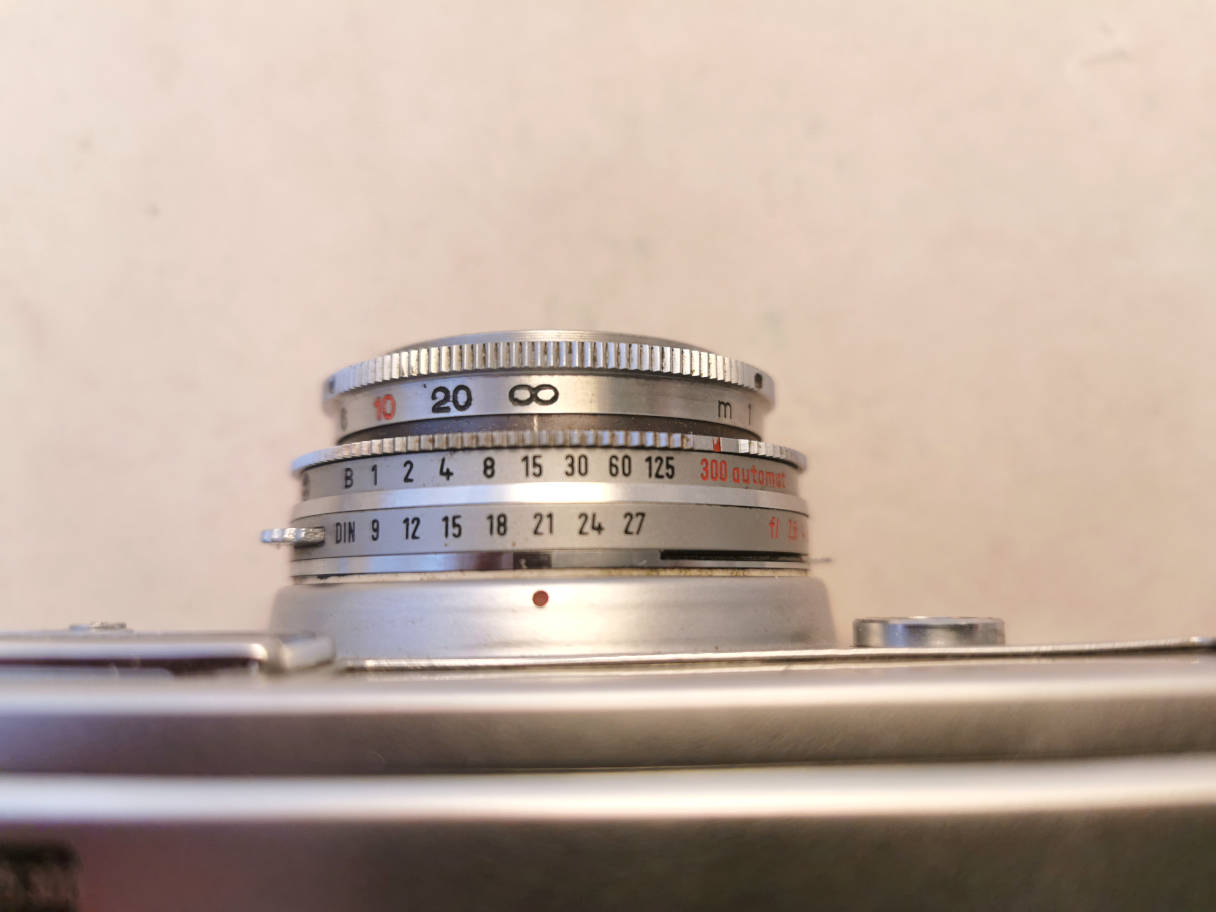
Seen
from top. Lens barrel. DIN/aperture setting ring (the ISO/ASA scale is
to the other side of the setting lever), speed setting ring and
distance setting ring, goes down to 1m.
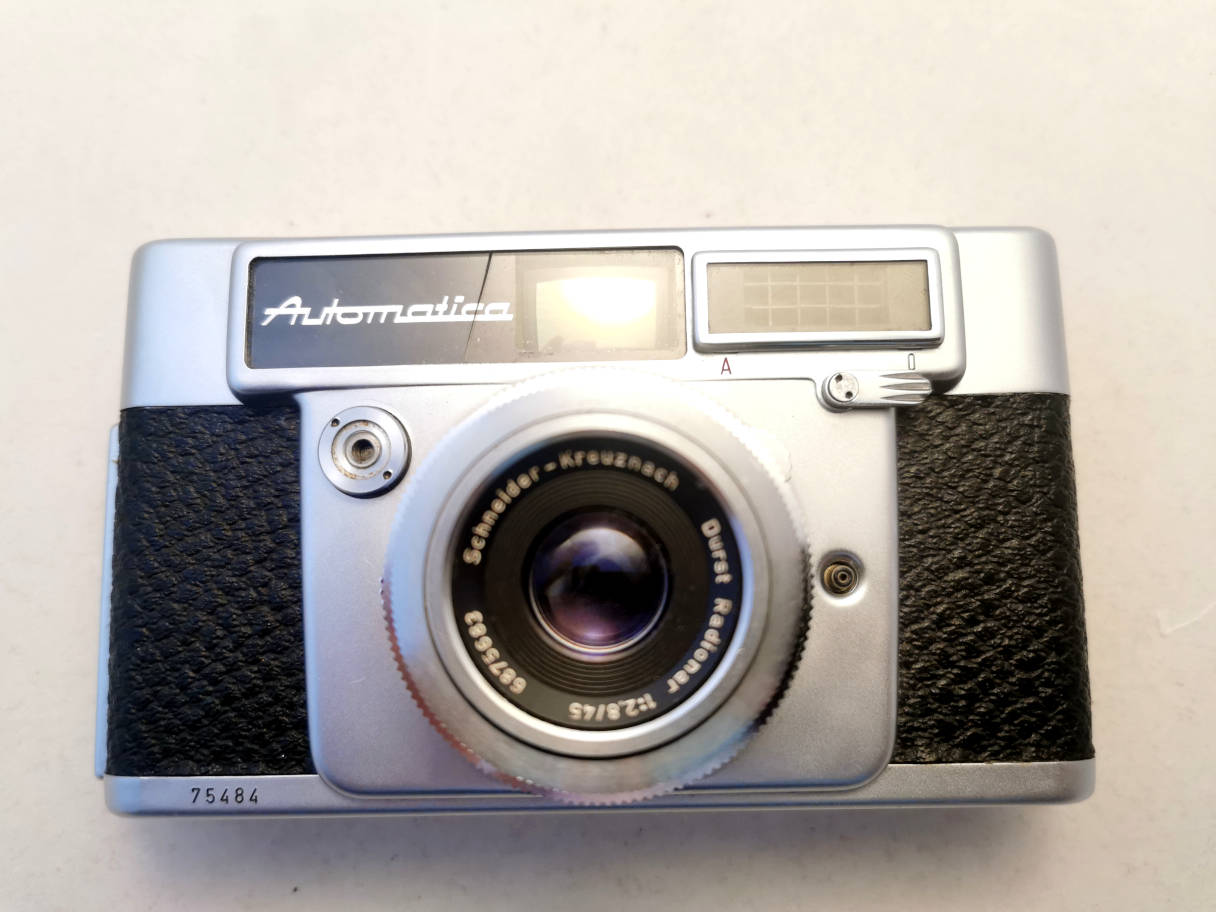
Lever moved to non-automatic setting.
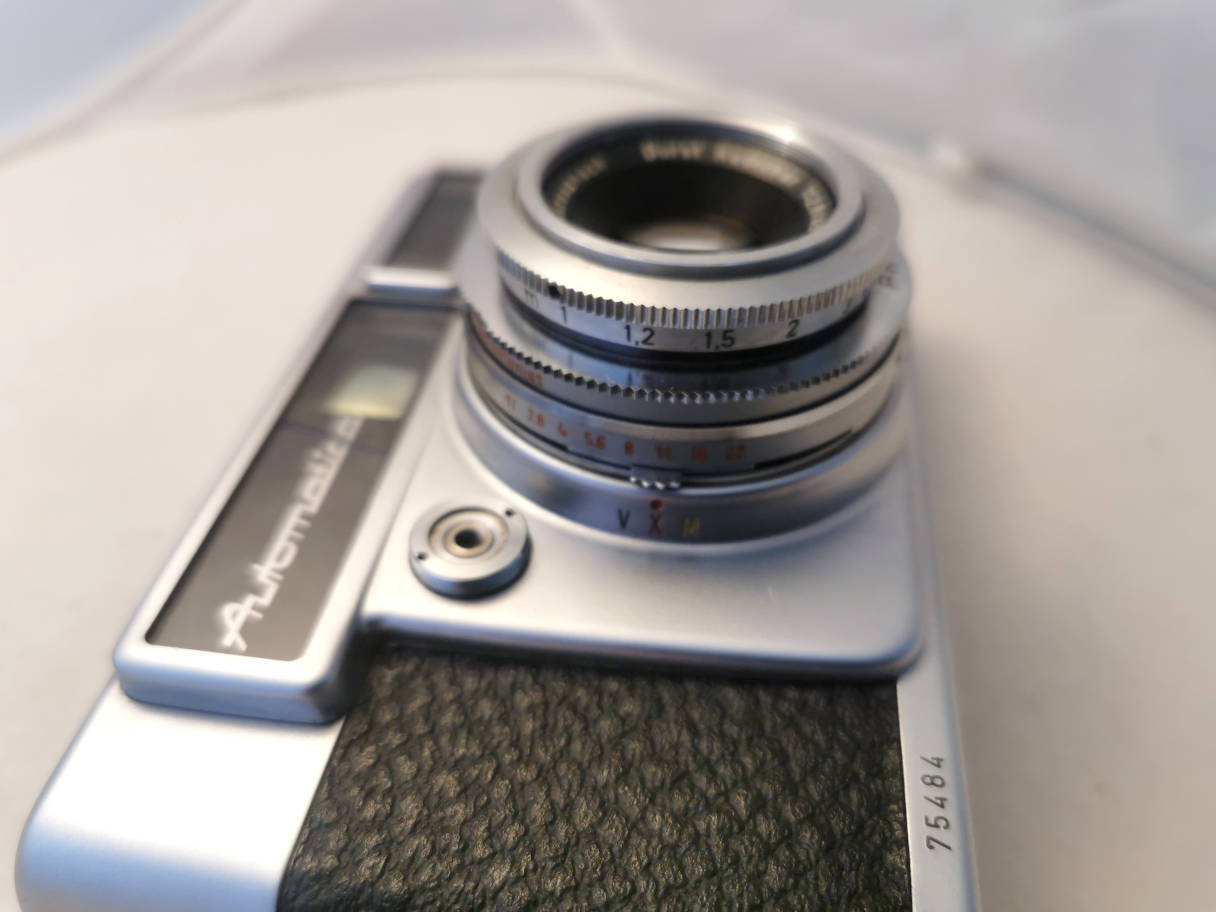
Sync switch and self-timer, aperture reading (11 in the picture).
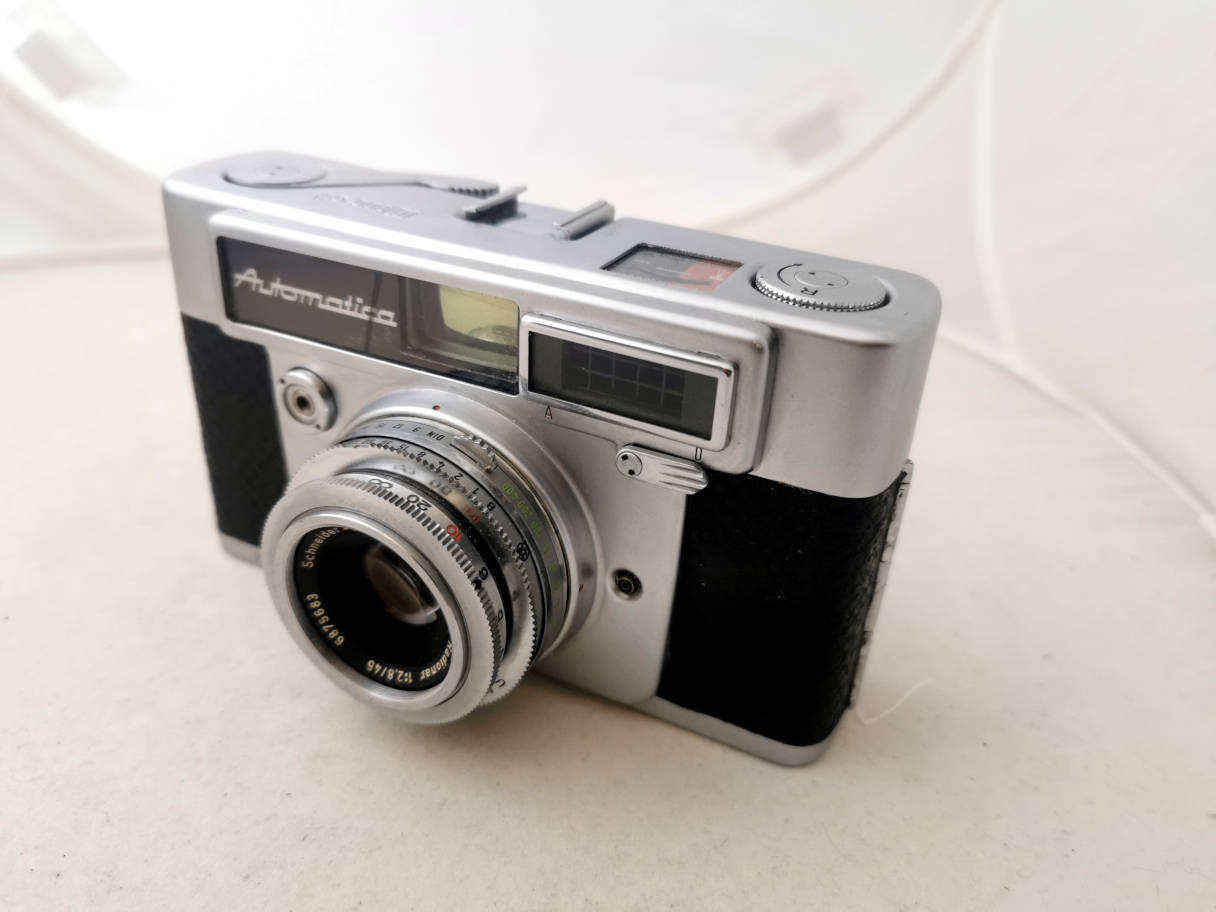
A stylish camera from the 50s.

Camera back open.
The
Durst Automatica is rare, not very well known, although it's the first
automatic camera. It has a modern, sober 1950s design, that was common
in the1960s.The absence of parallax correction is a weak point. A
rangefinder would have been very useful. Handling is easy and fluid
except the combined ISO/aperture setting, which makes you think twice
in manual setting. And you have to set the ISO back if you use the
automatic mode.
So it's a nice camera for collectors, but I would prefer a compact metred rangefinder.









